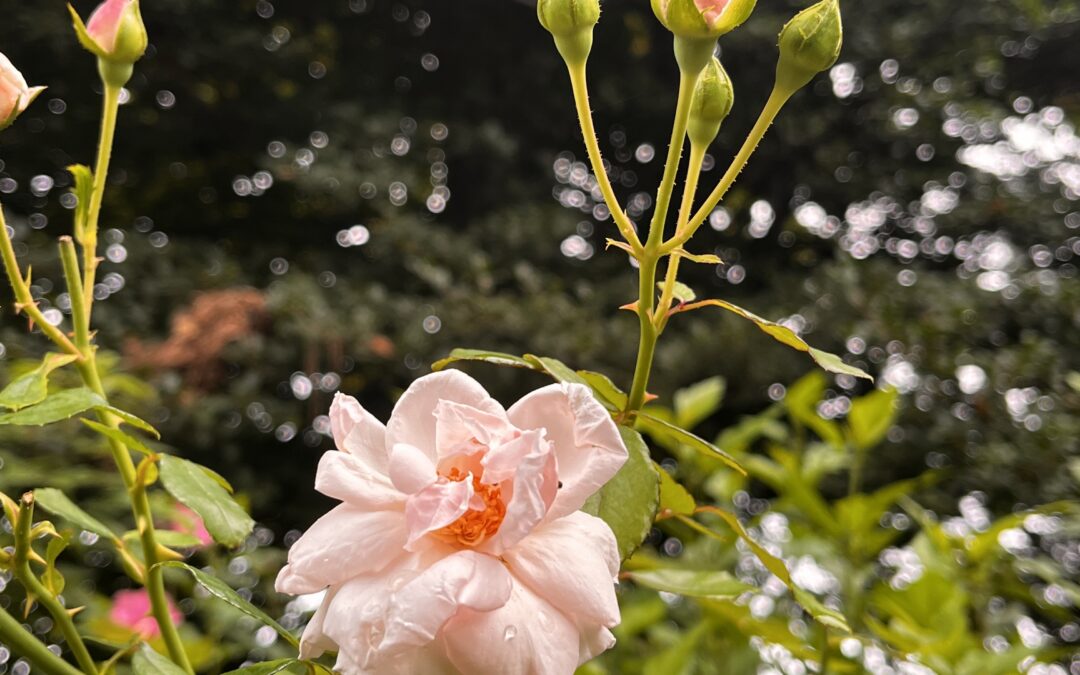This year, my garden has impressed upon me the importance of deadheading and pruning our plants. From slumped-over hydrangeas to nearly dead roses, a light pruning may not only improve the overall look of your plants, but may also save them from an untimely demise.
While pruning and deadheading our beloved plants may be a bit scary for some gardeners, done properly, you will improve the health of your plants, and they will thank you later.
Let’s start with the easy part — deadheading. Your flowering plants always have their eyes on the next generation. As the flower fades, your plant will go into seed production mode to preserve its heritage. Once these seeds are formed, the flowers complete their cycle and will stop producing. But by removing spent flowers, the plant will go back into flower-making mode. Some of my plants that benefit from deadheading are my dahlias and marigolds. You can simply flick off fading flowers with your fingers, and soon you will see new flower buds appear.
Zinnias and cosmos are also good candidates for deadheading, but these plants should actually be “pinched” back. As these plants grow, they tend to be tall and spindly. If you cut the stems of the budding flowers down by a few inches, the plant will branch out and produce multiple stems with flowers.
Roses should be deadheaded to encourage new blooms, and you could simply snip off the spent plant. But a better way to deadhead roses is to continue down the stem past the three-leaflet set until you find the five-leaflet set. Cutting just above this five-leaflet node will help your rose grow a stronger, thicker cane. Previously, I thought some of my roses only bloomed once per season. But I realized when I trimmed them down, they rebloomed. Now I walk around the garden with scissors or pruners and cut off any spent flowers, knowing new flowers are in my future.
Another rose situation spoke to me loud and clear this season. I finally had the daunting task of selling my parents’ house and kept looking over my mom’s rosebush. Knowing that when you sell a home, the flowers you cherished may be ripped out and thrown to the curb by the new owner, I dug up the rosebush. It was a beast, and I soon realized it was actually three separate rosebushes growing together. Each plant was laden with rose buds ready to burst open. To my dismay, despite my best efforts at watering these rose bushes, each was withering away. I realized that in my effort to save all these buds, I was actually killing the plants. I made the difficult decision to remove all the buds and eventually gave the rosebushes a hard pruning. It was depressing, and I felt as though I had let my mom down. Well, she must have been encouraging me from heaven. After a couple of weeks of watering, new leaves emerged from each of these rosebushes, and I can proudly report that they are all blooming again. It’s a good reminder that sometimes we must sacrifice a few flowers and instant gratification to save the plant. Blooming takes a lot of energy from a plant, so when transplanting, you should cut off the flowers so that the plant can focus on developing roots.
I love the fact that as you cut your flowers for a bouquet to share with others, you will be rewarded by your plant with new blooms. Of course, certain plants like peonies, oriental poppies, daffodils and tulips will only bloom once per season and will not form new flowers when cut. However, cutting the flowers will allow the plant to focus its energy on stronger roots instead of wasting energy on producing seeds.

Towards the end of the season, you will want to stop deadheading some of your plants that will readily self-seed for next year. Some prolific self-seeders are cosmos, four-o’clocks, alyssum, portulaca, and coreopsis. You can also save these seeds as the flowers die to control where you plant them or to save seeds for a friend. Also, consider allowing some of your flowers to remain on the plant so that you can share the seeds with your feathered friends. One of my magical gardening moments is watching a goldfinch balance on top of my tall verbena while pulling out the seeds. This summer, goldfinches have been rare in my garden, but I did spy one attacking my zinnia for seeds. I was more than happy to share and hope he will return for more.
Grab your pruners and give your plants a good trim. You will be giving them a reboot after the dog days of summer. As cooler temperatures arrive, your plants may reward you with a fresh, new flush of flowers. Happy pruning! Send your results, comments and questions to: shorelocalgardener@gmail.com.
Tammy Thornton lives with her husband, children, and crazy pets while enjoying a life of gardening, cooking, and going to the beach.















